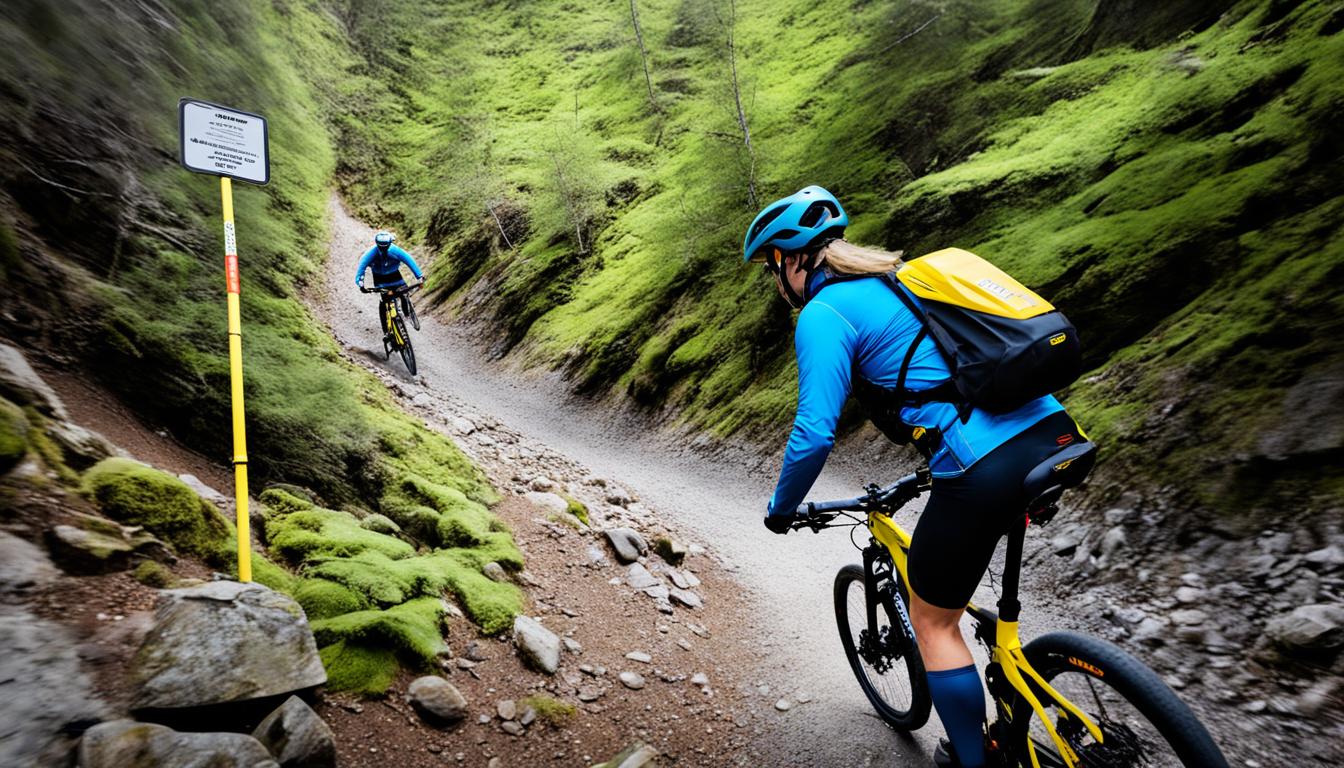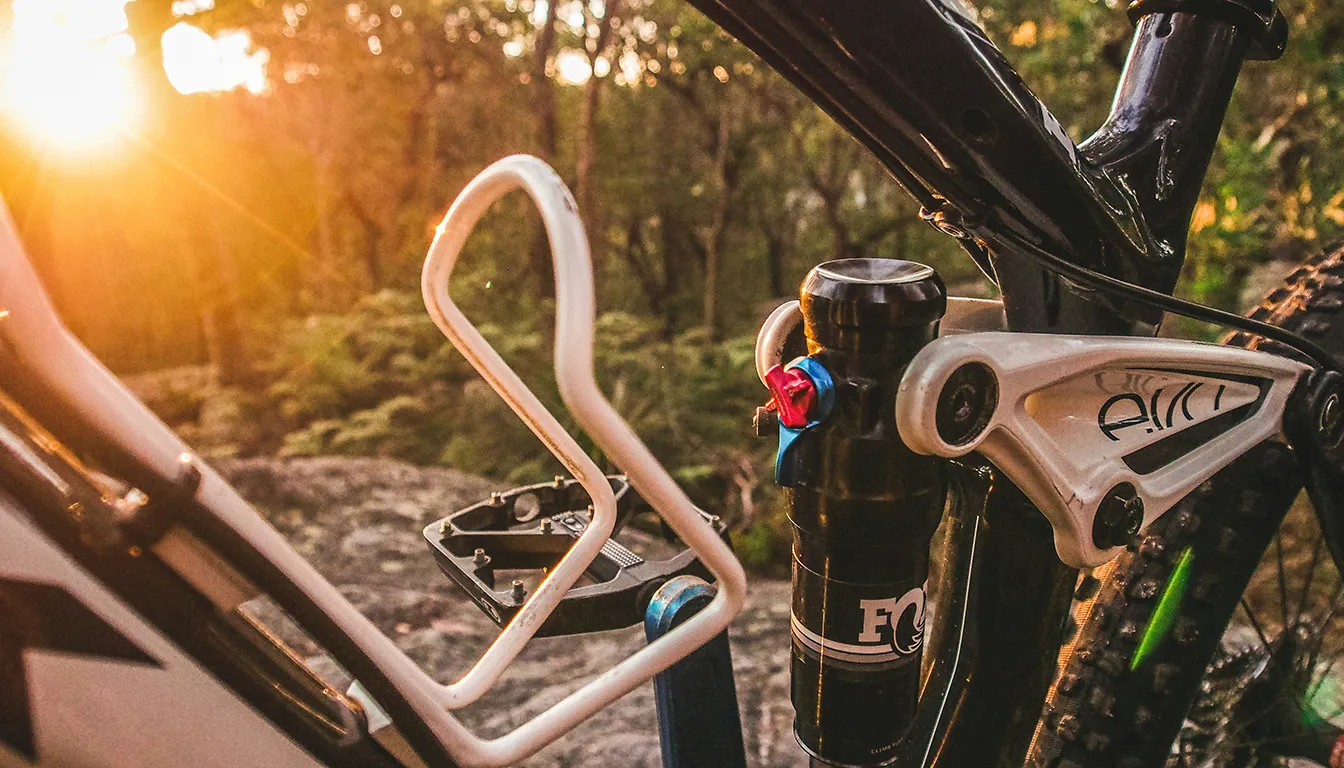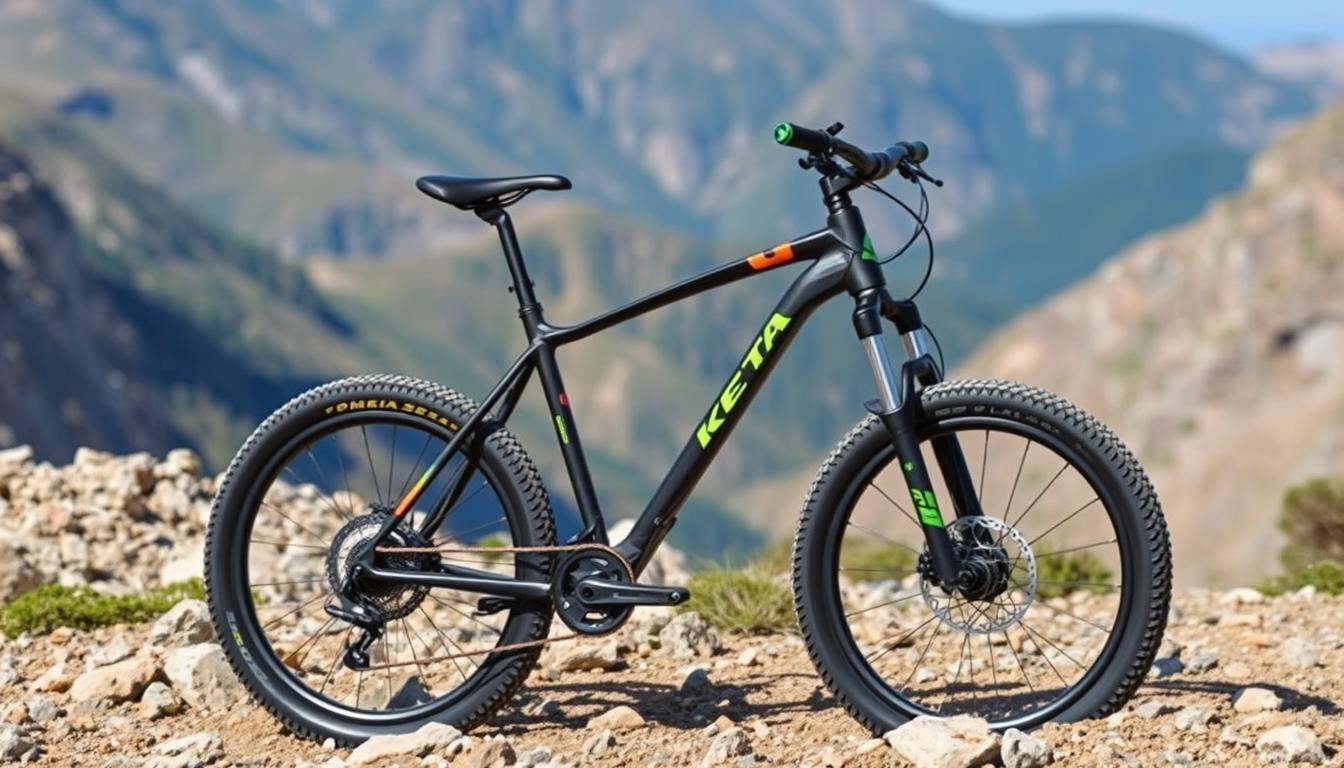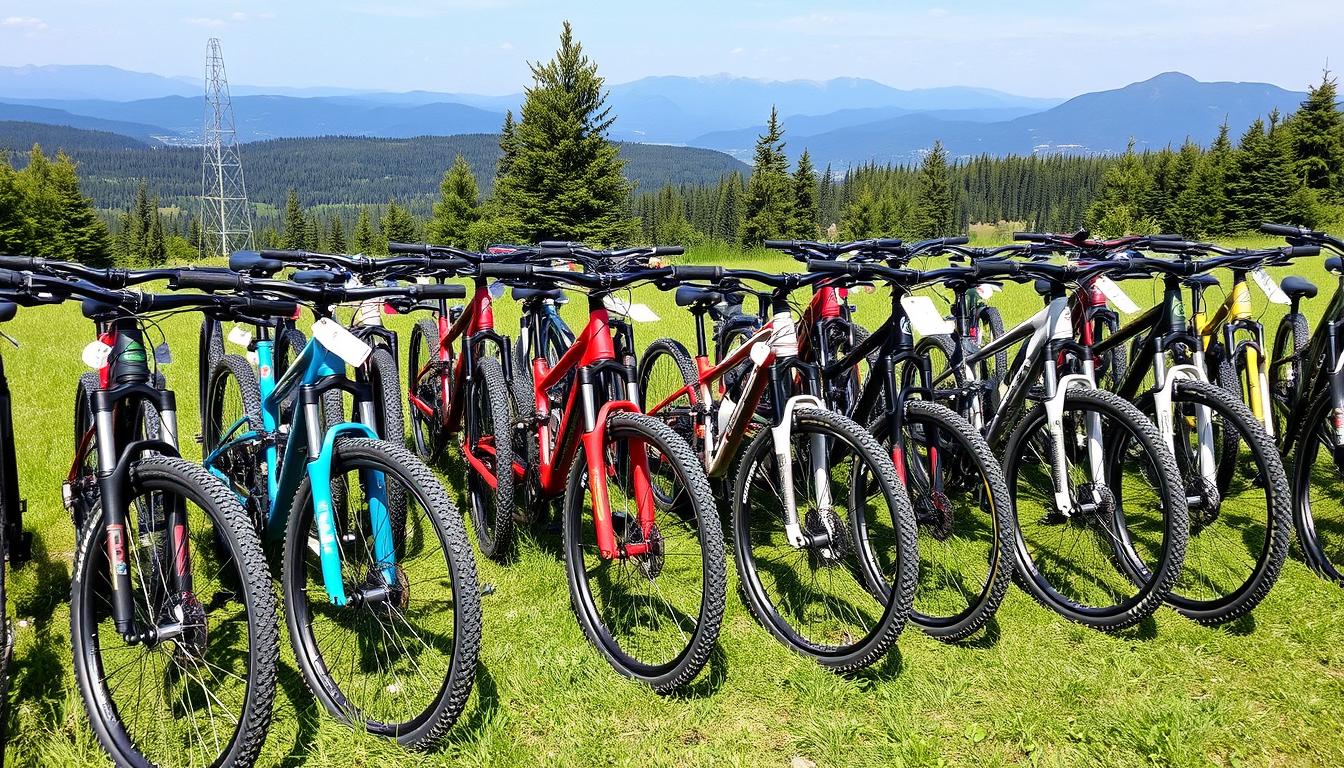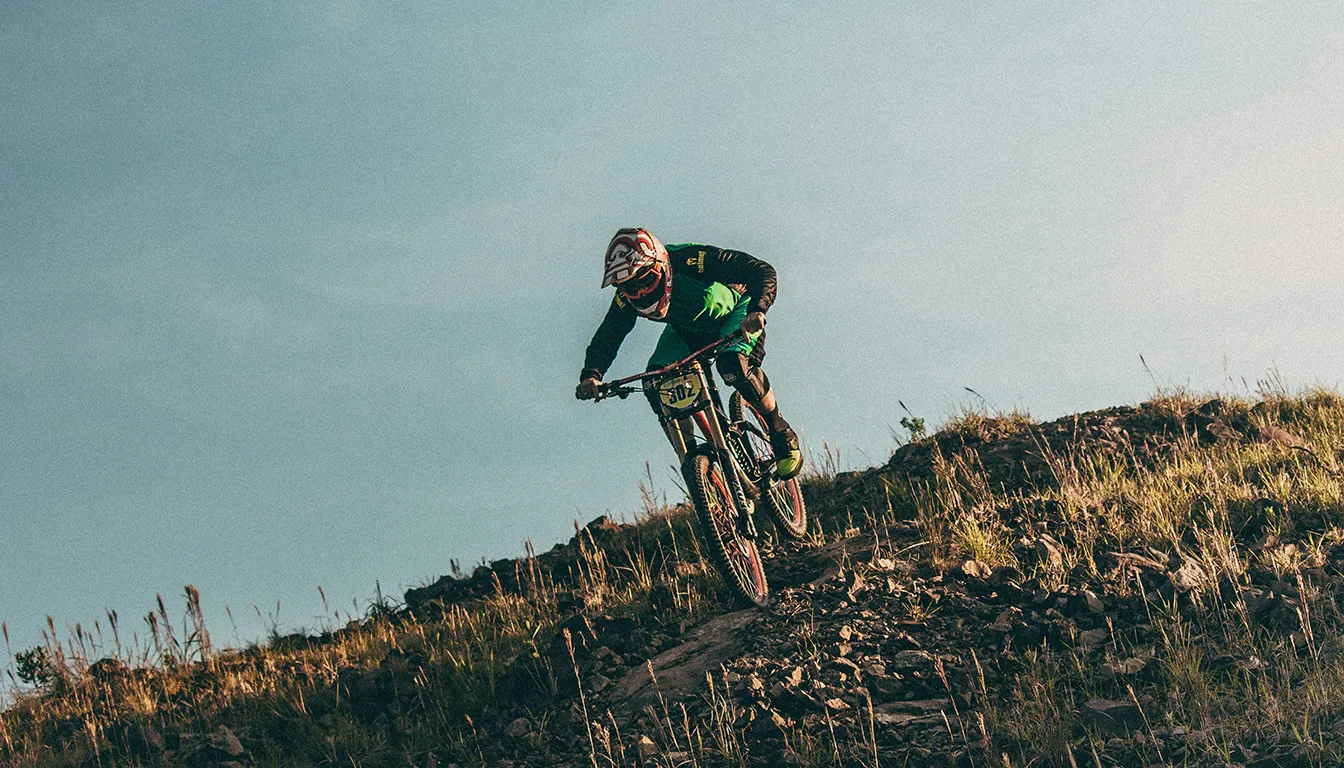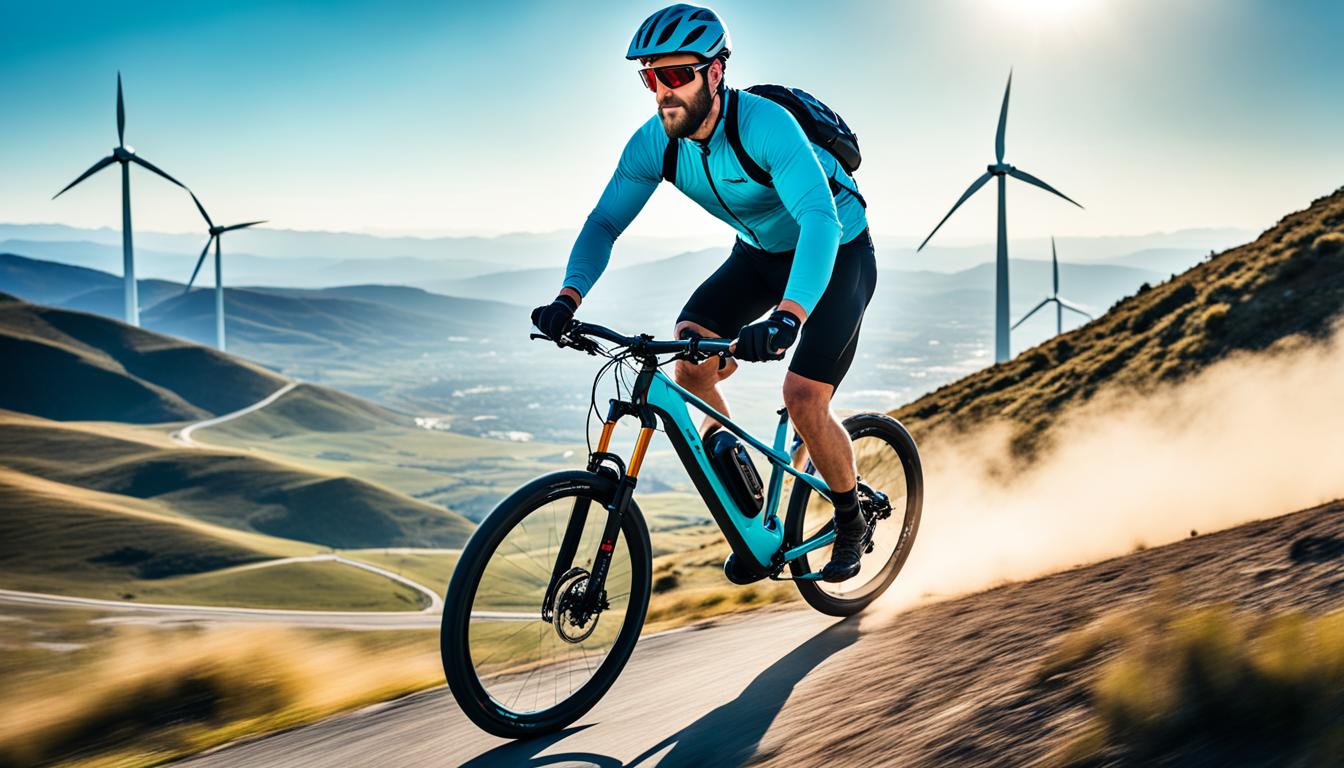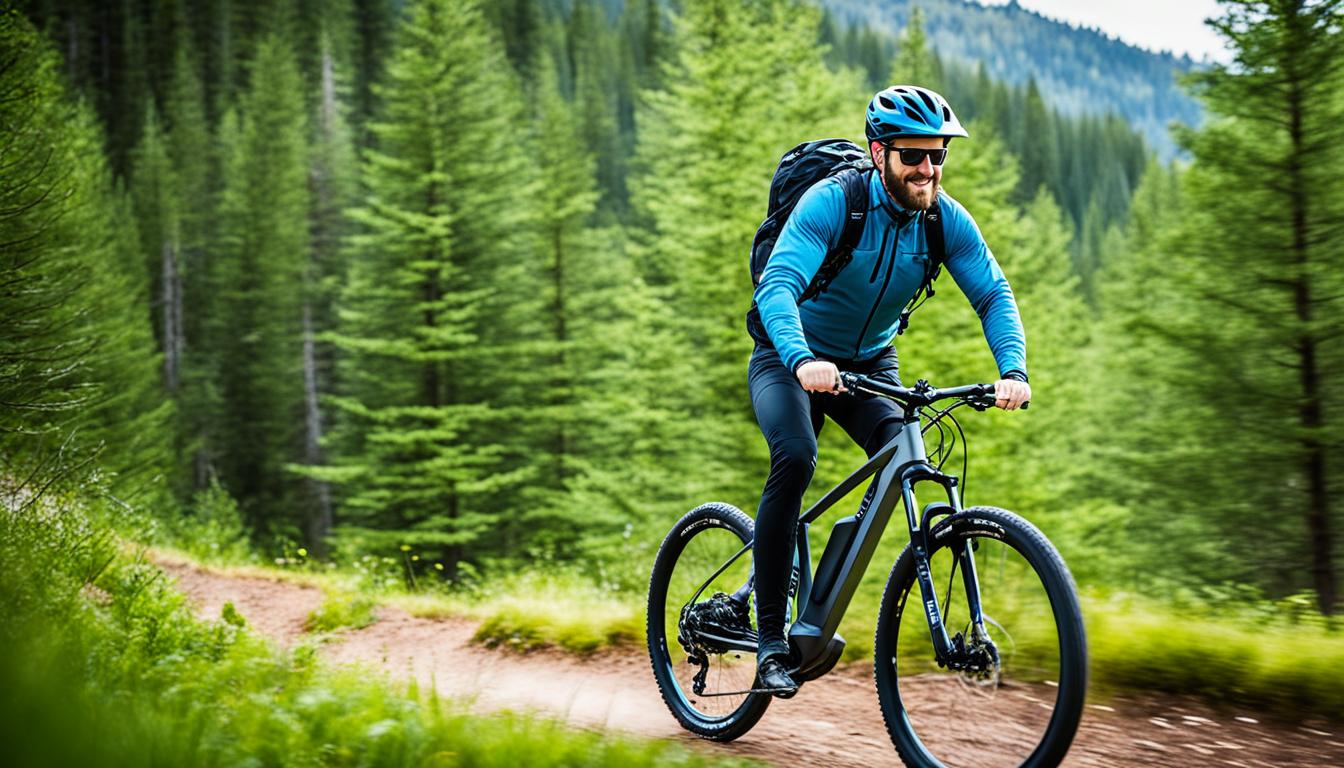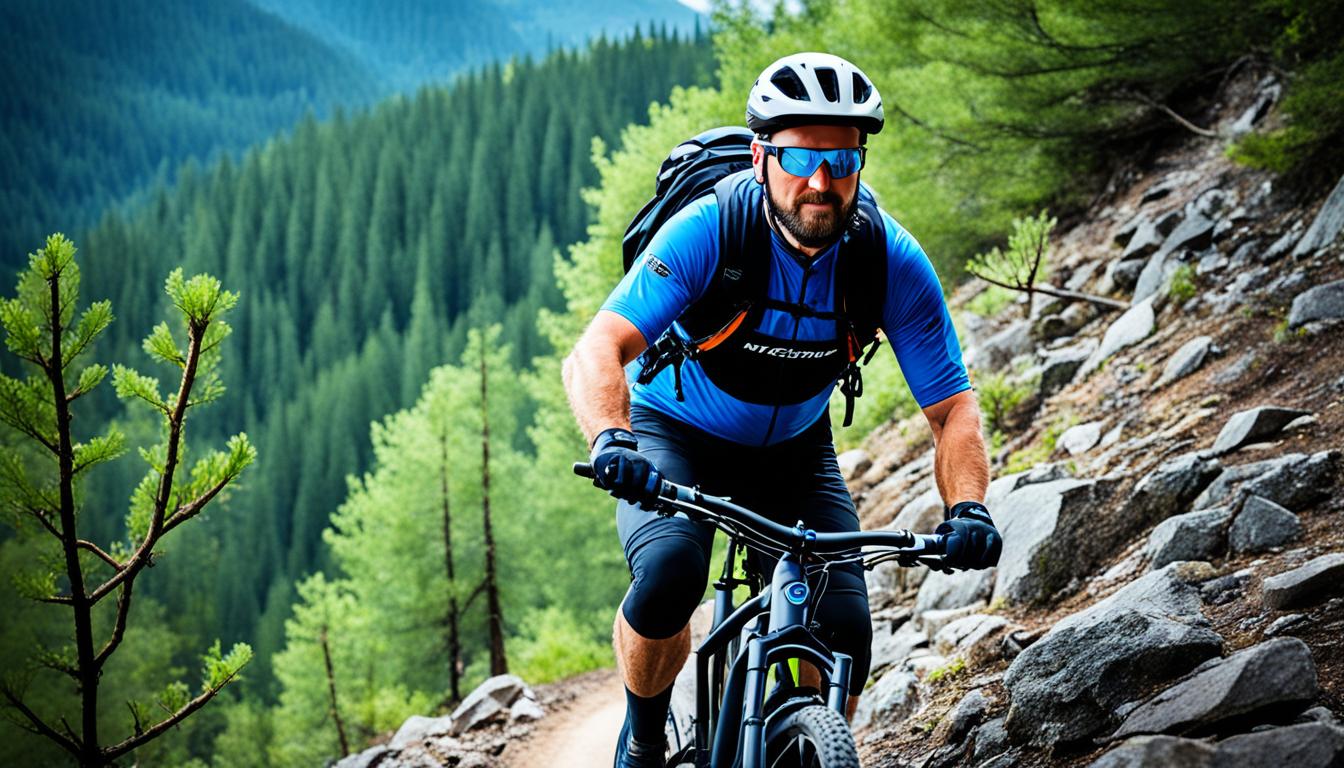Mountain biking with an e-bike is exciting but comes with its own safety challenges. E-bikes are heavier than traditional bikes. This means they’re harder to control, raising injury risks for all riders. Knowing how to operate your e-bike is key to staying safe.
The popularity of e-bikes is growing. With this growth, it’s important for riders to know how to manage their bike’s speed and weight. These tips help make riding safer and more enjoyable.
Choosing the right e-bike for your adventure is crucial for safety and comfort. It’s best to test your e-bike in a safe area before hitting difficult trails. Watching your battery level is also key to prevent getting stuck on long rides. By learning essential skills and making smart choices, cyclists can greatly improve their rides and stay safe.
Understanding E-Bikes and Their Unique Characteristics
Electric bikes, or e-bikes, have special e-bike characteristics that set them apart from normal bikes. They are heavier because of their electric parts. This extra weight affects how they handle, especially on different types of ground. E-bikes come in styles for road commuting, touring, and especially, mountain biking. Each mountain biking variant is made for tough trails and hard landscapes. This makes outdoor adventures more thrilling.
E-bikes mainly use a pedelec system. This system helps the bike only when you pedal. Sticking to a legal speed limit of about 15.5mph, it makes biking feel more natural. The motor can add up to 250 watts. This really helps when going up steep hills.
The latest electric bike features bring smooth acceleration and support until the legal speed cap. Electric mountain bikes have a special design for stability and control on tough ground. They often have fat tires. These tires are a mix of agile and strong, perfect for difficult off-road paths.
If you’re thinking about getting an e-bike, knowing the different kinds is important. There are Cross-Country, Trail, Enduro, and All-Mountain eMTBs. Each one suits different terrains for fun, unique rides. For more details on what to look for in electric mountain bikes, check out this guide: Electric Mountain Bikes Guide.
Essential E-Bike Mountain Biking Safety Tips
Choosing the right e-bike matters a lot for a good mountain biking experience. Think about the kind of ground you’ll ride on before picking your bike. A city bike might struggle on rough trails. Look at the tyres and the bike’s shape because they affect how it rides on different grounds. Making sure your e-bike fits the terrains you plan to ride will make your experience safer and more fun.
Selecting the Right E-Bike for Your Terrain
Each terrain type needs specific e-bike features. For tough and hilly areas, a bike with strong tyres and the right frame is key. This choice greatly affects how you’ll ride and perform. Try a few bikes to see which one feels right for you and suits your trails. This helps make sure you’re safe.
Understanding Weight and Handling Differences
How an e-bike’s weight is spread out affects how it handles. Heavy bikes might need you to change how you ride, especially going downhill or around tight turns. Knowing about this helps you control the e-bike better, making your ride smoother and steadier. It’s wise to practice in a safe area to get used to how your bike moves.
Discover additional e-bike safety tips here that cover smart ways to manage speed and the weight of the bike. Learning these can make e-mountain biking more exciting and safer.
To get even better, think about joining local biking groups or getting advice from seasoned bikers. Getting good at handling an e-bike means you can confidently face mountain biking’s demands.
Pre-Ride Checks for E-Bike Safety
Before you set off on your e-bike adventure, it’s crucial to do some pre-ride checks. You should look at the battery, brakes, and tyres. This makes sure your ride is both smooth and secure. For more tips and tricks, read this article about top tips for mountain biking on an e-bike.
Battery Status and Inspection
Checking the battery is a key step before you ride. Make sure it’s securely in place and fully charged. It’s good to keep the battery charge between 30% and 70% to make it last longer. Always look for damage like corrosion or dents, which is vital if you ride a lot. Doing this helps avoid any surprises and keeps your bike running well.
Brakes and Tyres: Importance of Maintenance
Looking after your brakes is crucial for staying safe. The brake pads should be no less than 1.5 millimetres thick to work properly. Tyres are just as important, especially for e-bikes, which need more frequent inflation. Make sure they’re at the right PSI. Checking these parts is essential for good control and handling. Putting time into these checks improves your overall ride.
Riding Techniques for Greater Safety
Improving your safety on an e-bike starts with good riding skills. Because e-bikes are more powerful, it’s key to handle speed and braking well. Learning to manage the added weight and speed helps make riding safer.
Mastering Speed Control and Braking
Managing speed is vital for e-bike riders. The extra power means you need more room to stop. It’s important to be careful when you’re going around turns or passing obstacles. Lowering your saddle by 20-30mm can make you more stable during tough climbs. This aids in control, particularly when pedalling a bit slower. Lightening power when shifting gears helps your drive chain last longer. This is useful because e-bikes have more torque.
Cornering Skills and Riding Posture
Cornering well is crucial on e-bikes since they handle differently. Leaning forward a bit helps keep the back wheel on the ground during climbs. It’s important to adjust how you sit to stay balanced, especially on rough ground. Choosing the right power mode, such as Tour or e-MTB, also aids in keeping the back wheel steady on slippery surfaces.
The Importance of Using Gears Correctly
Knowing how to use gears right is key too. Take time to learn the walk mode for tough spots or when you need to push the bike uphill. Wearing extra layers in cold weather also helps against the chill at higher speeds. By improving these techniques, e-bike riders can have a safer, more fun mountain biking adventure.
FAQ
What are the essential safety tips for mountain biking on an e-bike?
Start by picking an e-bike that fits the terrain you will ride on. Learn how it handles because it may weigh more and move differently than you’re used to. Always check your bike before riding, and practice controlling your speed and turning safely.
How do e-bikes differ from traditional bicycles?
E-bikes are heavier and go faster than regular bikes, changing how they move. They are designed for different uses, so you should pick one that suits where you plan to ride.
Why is it crucial to perform pre-ride checks on my e-bike?
Checking your e-bike before you ride is critical. Look at the battery, brakes, and tyres. This ensures it’s in good shape, avoiding breakdowns and making your ride safer and more enjoyable.
What factors should I consider when selecting an e-bike?
Think about the tyres, frame shape, what you’ll use it for, and if it’s right for where you’ll ride. Choosing the right e-bike is vital, especially if you’re going off-road.
How do I master speed control and braking on an e-bike?
Knowing that e-bikes stop slower than regular bikes is key. Work on braking gently and keeping a good distance from anything in your path to stay safe.
What cornering techniques should I adapt for e-biking?
E-bikes are heavier and assist your ride, so turn by leaning in, staying low, and making sure your tyres are well-placed. This improves grip and stability while you corner.
Why is proper gear usage important for e-biking?
Using gears right helps you adjust to different landscapes and hills. It enables better speed control and makes pedalling easier, leading to a safer and smoother ride.
